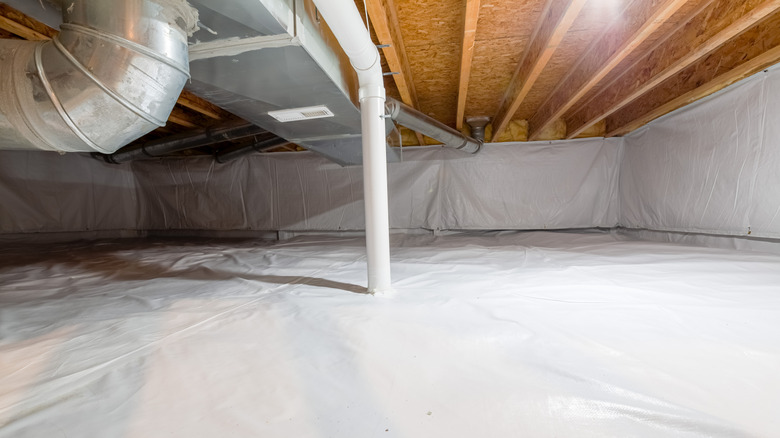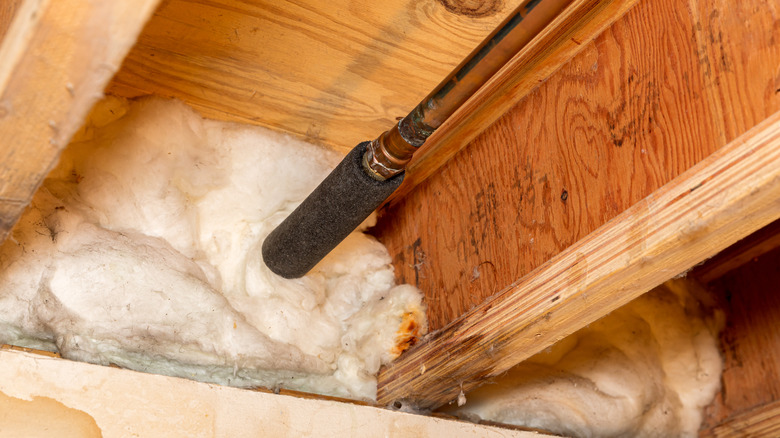How To Properly Dehumidify A Room Without Vibrating The Subfloor
We may receive a commission on purchases made from links.
If you're constantly battling high humidity indoors, your crawlspace may be affecting the interior of your home. To keep the air in your home balanced, it's vital to protect your crawlspace from excess moisture through methods like encapsulation and installing a dehumidifier. However, these units can have the adverse effect of vibrating your subfloors while running. To prevent that from happening, you can add extra insulation to your subfloors or hang them.
Encapsulation refers to wrapping your crawlspace in a heavy-duty moisture barrier typically made of polyurethane. This helps to reduce moisture and complications associated with it, like pests and mold. There are alternatives to encapsulation, but if you decide to do it, you must include a dehumidification system to ensure that your air is properly conditioned and maintain healthy humidity levels. Crawlspace dehumidifiers are different from your average unit because they are designed for narrow spaces, long run times, and overall increased durability. As a result, they also tend to be much more expensive, often ranging from $1,500 to $3,000.
When these machines operate, they make noise, so vibrating subfloors are a somewhat common side effect of installing crawlspace dehumidifiers. Luckily, this can easily be prevented from the start by adding extra insulation to your subfloors above the dehumidifier. Although many people primarily think of insulation as a form of temperature control, it also helps block sound and vibrations. While the cost of subfloor insulation can vary depending on factors like the type you choose, expect to spend between $0.25 to $2 per board foot.
Other ways to silence your crawlspace dehumidifier
Rather than insulating your subfloor, you can also add insulated ductwork to the dehumidifier. In addition to reducing vibrations, ducting a crawlspace dehumidifier improves function, as it can distribute the dehumidified air more evenly throughout the space. For insulated ductwork, expect to spend $2 to $4 per linear foot, depending on the material. To complete this process, you'll also likely need to purchase a duct collar, which is used to start a duct system.
Lastly, you can purchase a hanging kit for your dehumidifier, which can also reduce feedback throughout the rest of your house. These kits allow you to attach your dehumidifier to the floor joists and may also improve airflow. You can find hanging kits, like the AprilAire, on Amazon for only $63.99. One reviewer stated that "installation was simple ... easy to do by myself," and another noted, "[It] prevents transmitting vibrations from the humidifier through the floor (rope vs metal rods)." However, reviewers had different opinions on the overall quality, so it may be worth investing a little extra in something like the ALORAIR Hanging Kits for $109.10.
If you have new issues with an existing unit, you should troubleshoot it with a maintenance check before taking any of these steps. It's recommended that you get your dehumidifier serviced annually to clean it, replace the filter, empty accumulated water, and more. A build-up of dust and debris in your dehumidifier can contribute to extra noise, so if the vibrations are a new problem, that may be enough to solve it.

